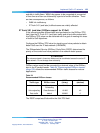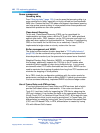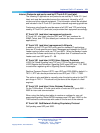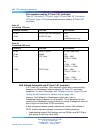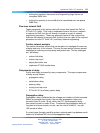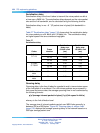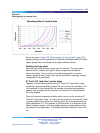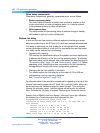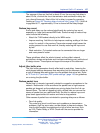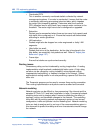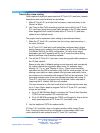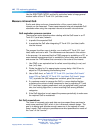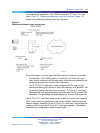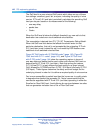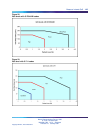
Implement QoS in IP networks 137
The average rtt time on that link is about 40 ms; the one-way link delay is
about 20 ms, of which the circuit transmission and serialization delay are
just a few milliseconds. Most of this link’s delay is caused by queueing.
Looking at Figure 26 "Queuing delay of various links" (page 135), if this link
is upgraded to T1, approximately 19 ms is shaved off the delay budget.
Reduce hop count
End-to-end delay can be reduced significantly by reducing hop count,
especially on hops that traverse WAN links. Some the ways to reduce hop
count include the following:
•
Attach the TLAN subnet directly to the WAN router.
•
Improve meshing. Add links to help improve meshing; adding a link from
router1 to router4 in the previous Traceroute example might cause the
routing protocol to use that new link, thereby reducing the hop count
by two.
•
Node reduction. Co-located nodes can be connected into one larger
and more powerful router.
These guidelines affect the whole intranet, as they affect network
architecture, design and policies and involves considering cost, political and
IP design issues. These topics are beyond the scope of this document.
Adjust jitter buffer size
The jitter buffer parameters directly affect end-to-end delay. Lowering the
voice playout settings decreases one-way delay, but the decrease comes at
a cost of allowing less waiting time for voice packets that arrive late. Refer
to "IP Trunk 3.01 (and later) DSP profile settings" (page 162) for guidelines
on re-sizing the jitter buffer.
Reduce packet loss
Packet loss in intranets is generally related to congestion somewhere in the
network. Bottlenecks in links are where the packet loss is high because
packets get dropped, as the packets are arriving faster than the link can
transmit them. The task of upgrading highly utilized links can remove the
source of packet loss on a particular flow. An effort to reduce hop count
gives fewer opportunities for routers and links to drop packets.
Other causes of packet loss not related to queueing delay are as follows:
•
Poor link quality.
The underlying circuit could have such problems as transmission
problems, high line error rates, and be subject to frequent outages. The
circuit might possibly be provisioned on top of other services, such
as X.25, Frame Relay, or ATM. Check with the service provider for
information.
Nortel Communication Server 1000
IP Trunk Fundamentals
NN43001-563 01.01 Standard
Release 5.0 30 May 2007
Copyright © 2007, Nortel Networks
.



